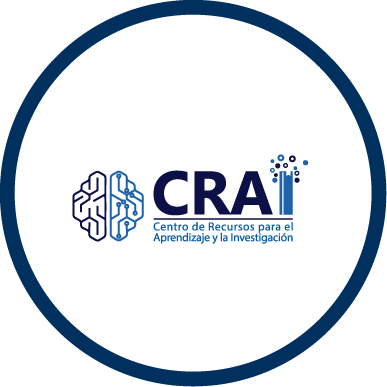From colonial masonry to modern exposed brickwork Bogota’s brick workshops and their influence on urban and architectural development (1810-1920): Los chircales de Bogotá y su impronta en la arquitectura y el desarrollo urbano, período 1810-1920
The article presents an approach to the historical evolution of Bogota’s early brick workshops, emphasizing on their contribution to architecture and urban development between 1810 and 1920. It includes an outlook of the so called Architecture of Transition, identifying styles, architects and constr...
Saved in:
| Main Authors: | , |
|---|---|
| Format: | info:eu-repo/semantics/article |
| Language: | spa |
| Published: |
UNIVERSIDAD ANTONIO NARIÑO
2011
|
| Subjects: | |
| Online Access: | https://revistas.uan.edu.co/index.php/nodo/article/view/377 https://repositorio.uan.edu.co/handle/123456789/10643 |
| Tags: |
Add Tag
No Tags, Be the first to tag this record!
|
| _version_ | 1831063033058689024 |
|---|---|
| author | Molina Prieto, Luis Fernando Hinojosa, Rita |
| author_facet | Molina Prieto, Luis Fernando Hinojosa, Rita |
| author_sort | Molina Prieto, Luis Fernando |
| collection | DSpace |
| description | The article presents an approach to the historical evolution of Bogota’s early brick workshops, emphasizing on their contribution to architecture and urban development between 1810 and 1920. It includes an outlook of the so called Architecture of Transition, identifying styles, architects and construction materials, and it analyzes the quality of the bricks provided by those local clayworkshops during the given period, as well as their production techniques improvement. It also spots out those first buildings to expose masonry as their only façade material in industrial,residential, governmental, educational and religious architecture, and, as a conclusion, it highlights the importance of such epoch for consolidating the usage of exposed brickwork in the city, an image that defines Bogota’s architecture during the second half of the twentieth century |
| format | info:eu-repo/semantics/article |
| id | repositorio.uan.edu.co-123456789-10643 |
| institution | Repositorio Digital UAN |
| language | spa |
| publishDate | 2011 |
| publisher | UNIVERSIDAD ANTONIO NARIÑO |
| record_format | dspace |
| spelling | repositorio.uan.edu.co-123456789-106432025-03-13T22:58:26Z From colonial masonry to modern exposed brickwork Bogota’s brick workshops and their influence on urban and architectural development (1810-1920): Los chircales de Bogotá y su impronta en la arquitectura y el desarrollo urbano, período 1810-1920 De la mampostería colonial al ladrillo a la vista: Los chircales de Bogotá y su impronta en la arquitectura y el desarrollo urbano, período 1810-1920 Molina Prieto, Luis Fernando Hinojosa, Rita Chircales de Bogotá desarrollo urbano materiales cerámicos Brick factories Bogota urban development ceramic materials The article presents an approach to the historical evolution of Bogota’s early brick workshops, emphasizing on their contribution to architecture and urban development between 1810 and 1920. It includes an outlook of the so called Architecture of Transition, identifying styles, architects and construction materials, and it analyzes the quality of the bricks provided by those local clayworkshops during the given period, as well as their production techniques improvement. It also spots out those first buildings to expose masonry as their only façade material in industrial,residential, governmental, educational and religious architecture, and, as a conclusion, it highlights the importance of such epoch for consolidating the usage of exposed brickwork in the city, an image that defines Bogota’s architecture during the second half of the twentieth century El artículo presenta una aproximación a la evolución histórica de los chircales (ladrilleras) de Bogotá, haciendo énfasis en su aporte al desarrollo arquitectónico y urbano de la ciudad durante el período 1810-1920. Se incluye un panorama de la arquitectura de transición que da cuenta de los estilos, los arquitectos y los materiales de construcción. Se realiza un análisis de la calidad de los materiales producidos en los chircales en el período de estudio, y la evolución de las técnicas para producirlos. Se identifican las primeras obras que usan el ladrillo a la vista como único material de fachada en la arquitectura industrial, residencial, civil, educativa y religiosa de la ciudad. Como conclusión se resalta la importancia del período de transición en la consolidación del uso del ladrillo a la vista como material que, durante la segunda mitad del siglo XX, caracterizó la arquitectura de Bogotá. 2011-06-14 2024-10-10T02:30:41Z 2024-10-10T02:30:41Z info:eu-repo/semantics/article info:eu-repo/semantics/publishedVersion Artículo revisado por pares http://purl.org/coar/resource_type/c_6501 http://purl.org/coar/version/c_970fb48d4fbd8a85 https://revistas.uan.edu.co/index.php/nodo/article/view/377 https://repositorio.uan.edu.co/handle/123456789/10643 spa https://revistas.uan.edu.co/index.php/nodo/article/view/377/316 https://creativecommons.org/licenses/by-nc-sa/4.0 http://purl.org/coar/access_right/c_abf2 application/pdf UNIVERSIDAD ANTONIO NARIÑO REVISTA NODO; Vol. 5 Núm. 10 (2011); 91 - 112 2346-092X 1909-3888 |
| spellingShingle | Chircales de Bogotá desarrollo urbano materiales cerámicos Brick factories Bogota urban development ceramic materials Molina Prieto, Luis Fernando Hinojosa, Rita From colonial masonry to modern exposed brickwork Bogota’s brick workshops and their influence on urban and architectural development (1810-1920): Los chircales de Bogotá y su impronta en la arquitectura y el desarrollo urbano, período 1810-1920 |
| title | From colonial masonry to modern exposed brickwork Bogota’s brick workshops and their influence on urban and architectural development (1810-1920): Los chircales de Bogotá y su impronta en la arquitectura y el desarrollo urbano, período 1810-1920 |
| title_full | From colonial masonry to modern exposed brickwork Bogota’s brick workshops and their influence on urban and architectural development (1810-1920): Los chircales de Bogotá y su impronta en la arquitectura y el desarrollo urbano, período 1810-1920 |
| title_fullStr | From colonial masonry to modern exposed brickwork Bogota’s brick workshops and their influence on urban and architectural development (1810-1920): Los chircales de Bogotá y su impronta en la arquitectura y el desarrollo urbano, período 1810-1920 |
| title_full_unstemmed | From colonial masonry to modern exposed brickwork Bogota’s brick workshops and their influence on urban and architectural development (1810-1920): Los chircales de Bogotá y su impronta en la arquitectura y el desarrollo urbano, período 1810-1920 |
| title_short | From colonial masonry to modern exposed brickwork Bogota’s brick workshops and their influence on urban and architectural development (1810-1920): Los chircales de Bogotá y su impronta en la arquitectura y el desarrollo urbano, período 1810-1920 |
| title_sort | from colonial masonry to modern exposed brickwork bogota s brick workshops and their influence on urban and architectural development 1810 1920 los chircales de bogota y su impronta en la arquitectura y el desarrollo urbano periodo 1810 1920 |
| topic | Chircales de Bogotá desarrollo urbano materiales cerámicos Brick factories Bogota urban development ceramic materials |
| url | https://revistas.uan.edu.co/index.php/nodo/article/view/377 https://repositorio.uan.edu.co/handle/123456789/10643 |
| work_keys_str_mv | AT molinaprietoluisfernando fromcolonialmasonrytomodernexposedbrickworkbogotasbrickworkshopsandtheirinfluenceonurbanandarchitecturaldevelopment18101920loschircalesdebogotaysuimprontaenlaarquitecturayeldesarrollourbanoperiodo18101920 AT hinojosarita fromcolonialmasonrytomodernexposedbrickworkbogotasbrickworkshopsandtheirinfluenceonurbanandarchitecturaldevelopment18101920loschircalesdebogotaysuimprontaenlaarquitecturayeldesarrollourbanoperiodo18101920 AT molinaprietoluisfernando delamamposteriacolonialalladrilloalavistaloschircalesdebogotaysuimprontaenlaarquitecturayeldesarrollourbanoperiodo18101920 AT hinojosarita delamamposteriacolonialalladrilloalavistaloschircalesdebogotaysuimprontaenlaarquitecturayeldesarrollourbanoperiodo18101920 |




